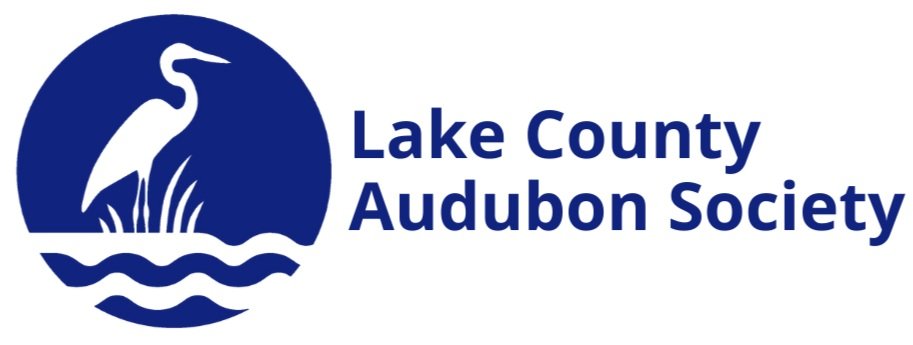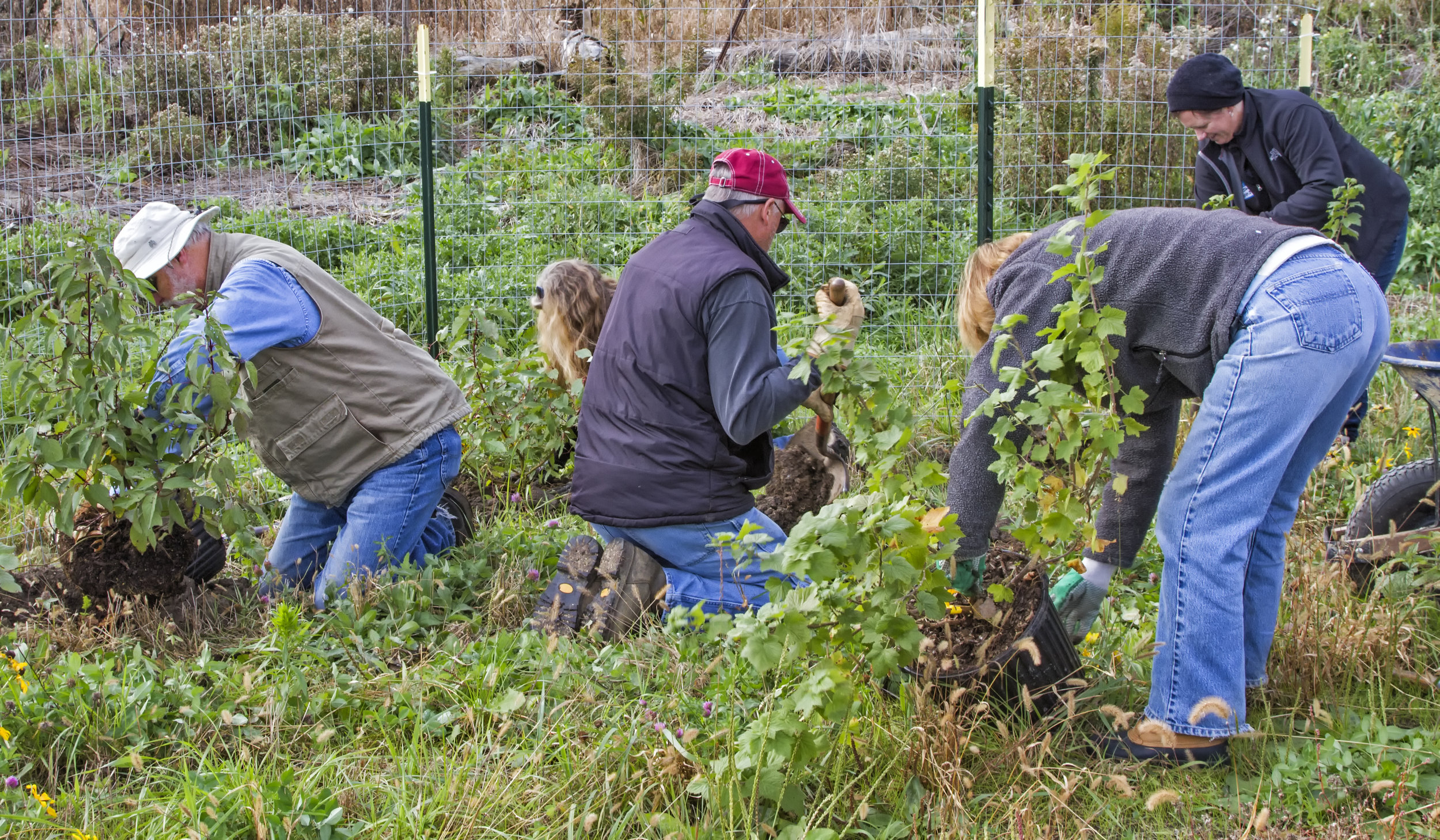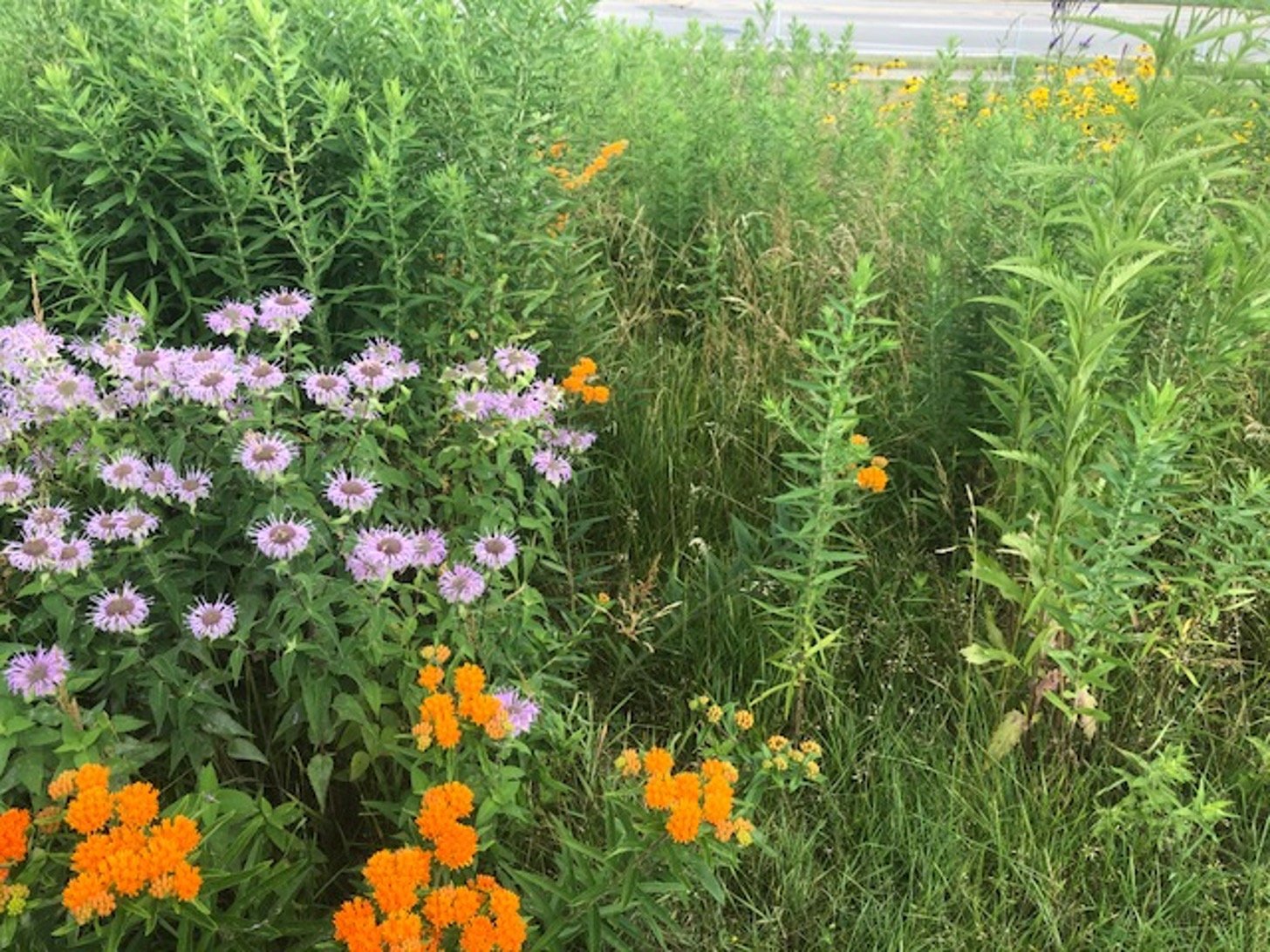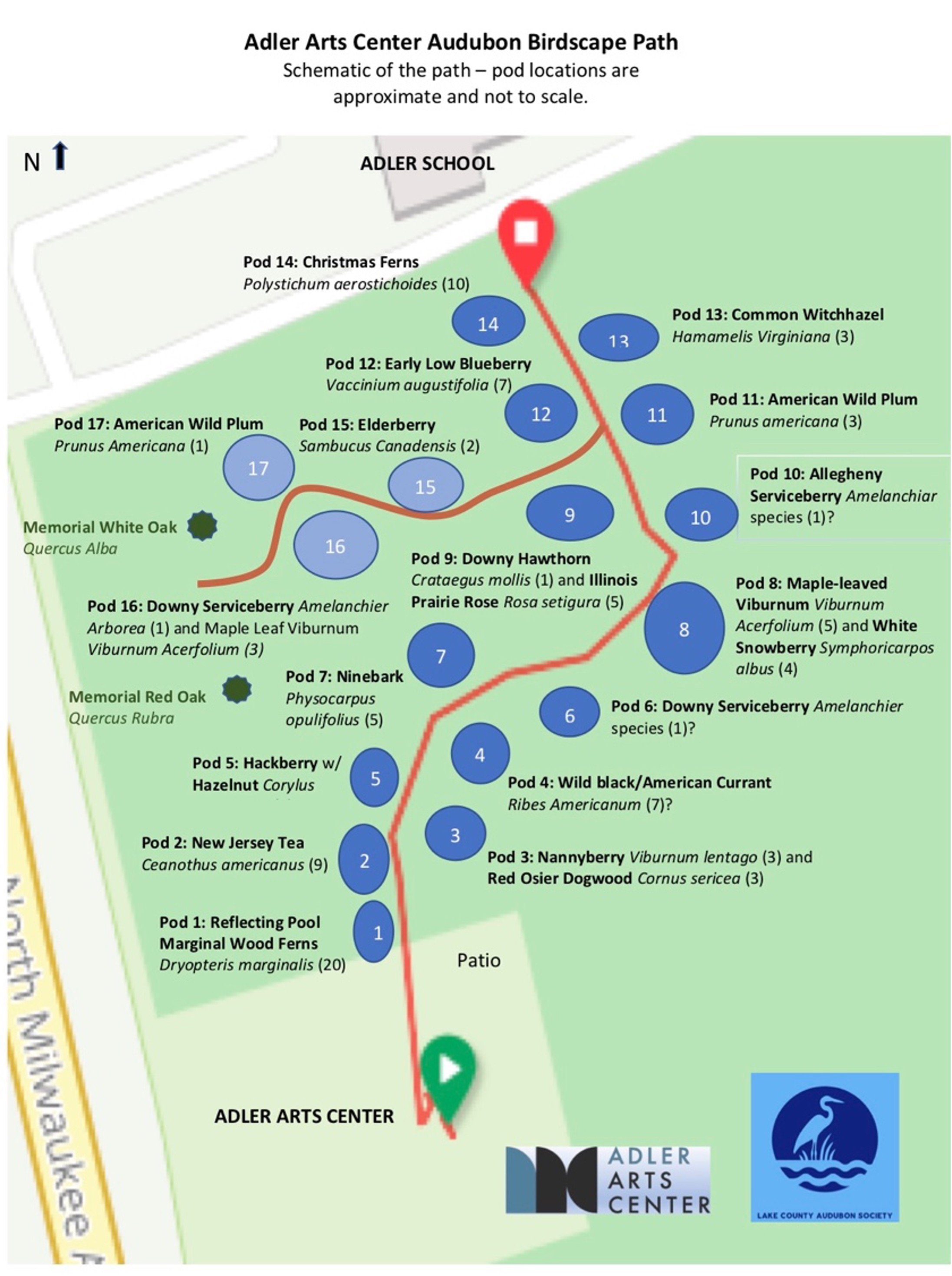
BIRDSCAPING
“Birdscaping” is the planting of native flowering plants, grasses, trees and shrubs that are important for birds and other wildlife. These plants produce flowers, seeds and berries that insects and birds require to thrive and reproduce. Lake County Audubon Society created the Birdscaping project as part of a long-term commitment to improving the environment by creating healthy habitat for birds and other wildlife - and a pollinator destination for insects. This project endeavors to not only provide bird-friendly habitat with native plants, but also educate Lake County residents and communities on the beauty and value of landscaping with native plants.
Lake County Audubon Society (LCAS) has established a grant program to assist with the purchase of native plants for Birdscaping projects in public places in Lake County. Eligible applicants can apply for up to $2,500 of LCAS cost-share for a Birdscaping project. This grant funding cost-share is for native plants only. If you have a project that might qualify for funding and want to learn more about the program, review the grant application and email Patty Werner.
About native plant communities
“Native plant species” are the plants that have adapted and developed to live in our area (or ecoregion) over time - they are adapted to seasonal conditions that occur here and are resilient to local variations in temperature, light, and moisture. A native plant community is best suited to provide the habitat native insects, birds and other animals need to survive. Insects pollinate and eat the plants, and birds and other animals eat the insects, seeds and berries the plants produce. Plants also provide insects and animals with shelter from predators and the weather (heat, cold, wind, rain and snow) and birds and other animals also use plants to build nests and raise their young.
Lake County Audubon Society-Supported Birdscaping Projects
Acorn Road Green Space Project
Fremont Township Highway Department (Fremont Highway) is creating accessible green space for people and birds by revegetating a site that includes two abandoned vacant lots in a Fremont Township neighborhood. Fremont Highway purchased the vacant lots that were an eyesore and unsafe for the community. The site was overgrown with invasive woody plants, harbored plenty of trash from fly-dumping, and had an eroded stream tributary to Diamond Lake.
Fremont Highway removed the invasive plants, cleaned up the trash and stabilized the stream banks in 2023 to make way for a bird and people-friendly green space. Thirty-five native shrubs and flats of native plant plugs have been installed for the birds already - and additional plugs are planned for installation in spring 2025. A split-rail fence was installed as part of a Boy Scout Eagle project in the fall of 2024 to demarcate the property line between the Green Space Project and a neighboring home. A walking path is currently being installed at the site for people access. Tree logs and silt worms are providing erosion control along the slope for the path that will be vegetated with soil stabilizing plants.
The Green Space Project is multi-functional as it will clean water flowing into Diamond Lake, provide habitat for birds and other wildlife, and is creating public green space in a neighborhood that does not have any. The site may also be used as an outdoor classroom for the nearby West Oak Elementary and Middle Schools.
At Left: WORK IN PROGRESS at Acorn Road Green Space Project where a path is being installed. Photo: Patty Werner
Prairie Preserve Native Bird Habitat
Lake Bluff Open Lands Association (LBOLA) is restoring .5 acres of native habitat for birds at Belle Foret Drive in Lake Bluff. The Birdscape project is in a neighborhood preserve that is Belle Foret homeowner association common open space. The preserve is leased to the Lake Bluff Park District and stewarded by LBOLA. The goal of the project is to remove invasive species and create productive bird habitat while educating neighbors on actions they can take to increase wildlife habitat on their properties. The trails through the Prairie Preserve will be wood chipped for access and an Eagle Scout project will improve an old boardwalk to make walking accessible year-round.
Project work began in 2024 with the removal of approximately .5 acres of buckthorn, honeysuckle, privet and other invasive species at the site. After follow-up treatment of re-sprouts of invasives, the site will be planted with at least 100 native shrubs in 2025. Native seed collection and dispersion will improve plant biodiversity for birds along the woodland edge. Volunteers from Great Lakes Navy base put wood chips on the trail this fall and large-scale buckthorn clearing will be completed in the winter. Birdscaping trees and shrubs will be planted in the fall of 2025.
At left: Belle Foret Prairie after invasive plant clearing. Photo: Michelle Mracheck
-
Lake County Audubon’s first birdscape project was a collaboration that began in 2012 with Libertyville Township. Native plant seeds and 160 native shrubs and trees were planted along the Libertyville Township Open Space trail through the Liberty Prairie Reserve south of Casey Road in unincorporated Libertyville. The goal of the project was to provide and expand habitat (food and shelter) for birds and other animals. Native plant species were selected to provide animals with high-energy food during different seasons of the year. Funding for this project was provided by Lake County Audubon, Audubon Great Lakes, the National Audubon Society, Trees Forever, Liberty Prairie Foundation, and others.
-
The John R Lewis Middle School Prairie Garden (formerly Thomas Jefferson Middle School) was developed under a cooperative Memorandum of Understanding between the school and the Lake County Audubon Society. A section of lawn in front of the school was removed and replaced with native prairie plants to attract birds. The project was completed with students and Audubon Society volunteers and has been cooperatively managed since its installation with supplemental plants and seeds provided by Lake County Audubon Society. In addition to its bird habitat benefits, the native prairie will be used by teachers as a learning tool.
-
The Woods at Adler Arts Center Birdscape Path is a Lake County Audubon Society collaborative project with the Adler Arts Center, the Village of Libertyville, and Landscapes Concepts LLC. The Woods at Adler is an approximate 9-acre woodland surrounding the Adler Arts Center. It includes remnants of the landscape design on the historic estate of David and Katherine Adler that was purchased by the Village in 1956. The woodland has been invaded by non-native European Buckthorn and Honeysuckle trees and shrubs. Since bird diversity decreases as buckthorn invasion increases in woodlands, this birdscape project involves removing the aggressive invasive trees and shrubs and installing bird-friendly native trees and shrubs in pods along a woodland path. This is a multi-year project that began in 2020 and is currently underway.
Birdscaping at home
Native plant garden. Photo: Patty Werner
While birdscaping of public open spaces provides important bird habitat, most of our landscape is privately owned as residential yards, business or institutional building campuses, or agricultural areas. How we design and manage our individual home and work landscapes will be even more important for the future of birds – and our future. There are several local, regional and national organizations and nursery businesses that support native plants for birds at home. Find out how to make your home a bird-friendly place by taking advantage of these resources.
Learn More
Links for more information about native plants for birds:
Openlands Conservation @Home program: https://openlands.org/get-involved/lands-in-harmony/
Wild Ones: https://nativegardendesigns.wildones.org/
Wild Ones Lake to Prairie Chapter:https://laketoprairie.wildones.org/resources/
National Audubon Society native plant selector: https://www.audubon.org/native-plants
Native gardening club: https://www.lcfpd.org/search/?Keyword=native%20garden%20club
U of I Extension: https://extension.illinois.edu/news-releases/create-bird-friendly-yard
Homegrown National Park: https://homegrownnationalpark.org/tallamys-hub-1
Become a Volunteer
Contact program coordinator, Paul Geiselhart: geiselhart8@aol.com






